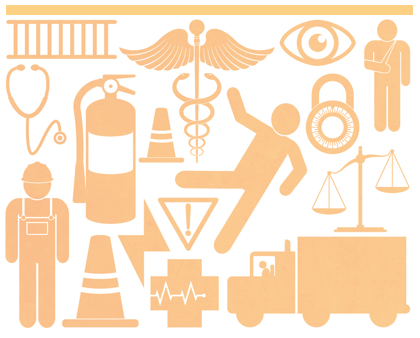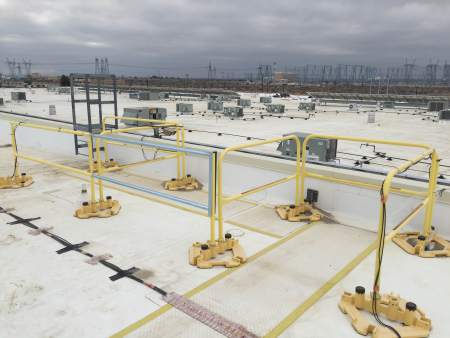Top 10 OSHA Violations in 2017

OSHA recently released its 10 most frequently cited OSHA violations during its fiscal year 2017, which started in October 2016 and ended the following September.
By: Rob Foote, Roofing Risk Advisors, LLC.
Although every business has unique workplace hazards, many businesses also share common pain points that threaten employee safety and can lead to costly OSHA violations.
OSHA’s list of frequently cited violations may help you identify common pain points in your workplace. Here’s the list of the top 10 violations in 2017:
- Fall protection: 6,072 citations—Falls from ladders and roofs still account for the majority of injuries at work, and the first step in eliminating or reducing falls is to identify all hazards and decide how to best protect employees.
- Hazard communication: 4,176 citations—This standard governs hazard communication to employees about chemicals that are both produced or imported into the workplace. Most violations concern the failure to develop a written hazard training program or failure to provide a Safety Data Sheet for all workplace chemicals.
- Scaffolding: 3,288 citations—The vast majority of scaffold accidents can be attributed to planking or support giving way. Employers should ensure that all scaffolding is set up and inspected by a qualified employee before it’s used.
- Respiratory protection: 3,097 citations—Employers must establish and maintain a respiratory inspection program to protect employees from oxygen-deficient atmospheres and hazardous materials.
- Lockout/tagout: 2,877 citations—Employees who service mechanical and electrical equipment face the greatest risk of injury if logout/tagout standards aren’t properly followed.
- Ladders: 2,241 citations—Most ladder violations occur when ladders are used for purposes other than those designated by the manufacturer, when they aren’t used on stable surfaces or when defective ladders aren’t taken out of service.
- Powered industrial trucks: 2,162 citations—Many employees are injured when lift trucks or forklifts are driven off of loading docks or when they fall between docks and unsecured trailers.
- Machine guarding: 1,933 citations—Machine parts can cause serious injuries, but the risk is substantially reduced by installing and maintaining proper machine guards.
- Fall protection training requirements: 1,523 citations—Employees should be trained to use fall protection methods such as guardrails, safety nets and personal fall arrest systems, and employers should verify that employees have been trained by preparing written certification records.
- Electrical wiring methods: 1,405 citations—The most common electrical wiring violations include failure to install equipment according to the manufacturer’s instructions and failure to guard electrical equipment.
Don’t Forget! OSHA Log Summaries Must be Posted by Feb. 1
All employers who are required to keep and maintain an OSHA Form 300 injury and illness log are required to post their OSHA Form 300A summary sheet in their workplaces by Feb. 1, 2018. The summary must list the total number of job-related injuries and illnesses that occurred during the previous calendar year, and must remain posted in a common area until April 20, 2018.
Employers with 10 or fewer employees or those in certain low-risk industries are partially exempt from OSHA log posting requirements. For more information on OSHA recordkeeping requirements or to download the required forms, visit OSHA’s website.
Contact Roofing Risk Advisors, a division of Frank H. Furman, Inc., for more information on OSHA Recordkeeping and Loss Control.























Comments
Leave a Reply
Have an account? Login to leave a comment!
Sign In